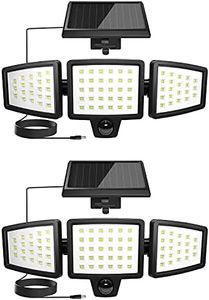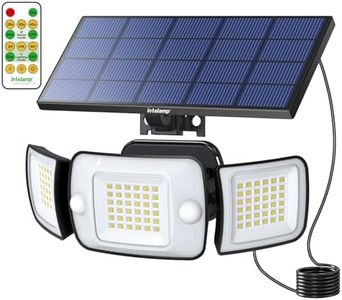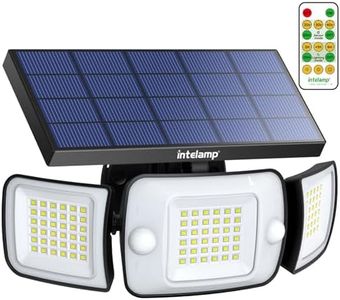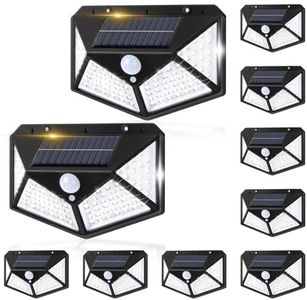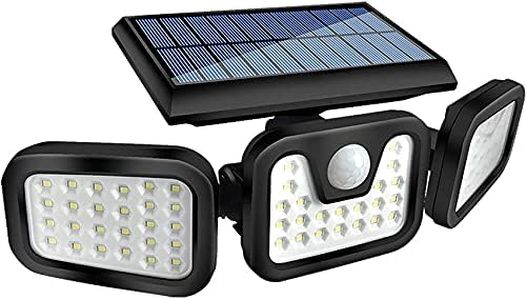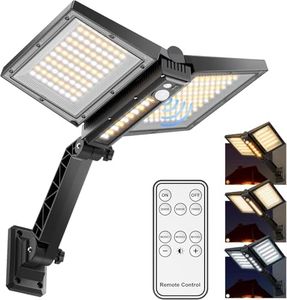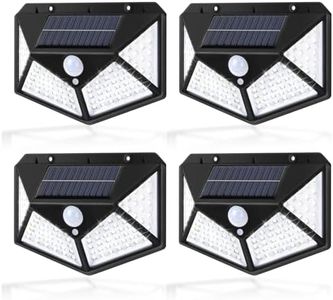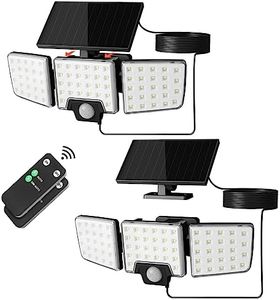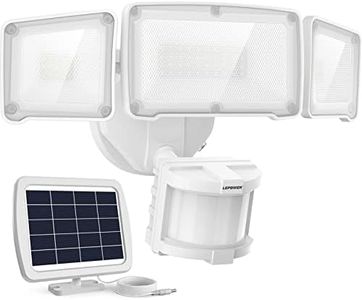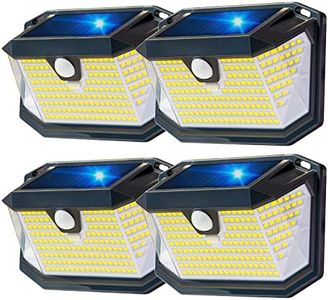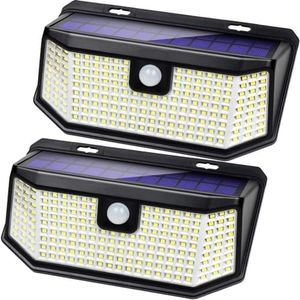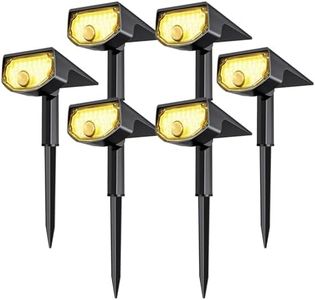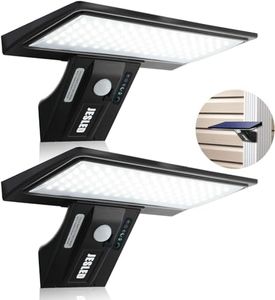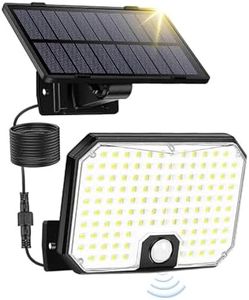We Use CookiesWe use cookies to enhance the security, performance,
functionality and for analytical and promotional activities. By continuing to browse this site you
are agreeing to our privacy policy
10 Best Solar Motion Detector Lights
From leading brands and best sellers available on the web.Buying Guide for the Best Solar Motion Detector Lights
Solar motion detector lights are becoming increasingly popular for providing outdoor lighting that is both energy-efficient and easy to install. These lights use energy from the sun to operate, turning on automatically when they detect movement. When choosing the perfect solar motion detector light for your needs, it’s important to consider several key specifications. Understanding what they mean and how they affect performance will help you make an informed decision that fits your particular situation, whether it’s lighting up a dark pathway or adding extra security to your home.Brightness (Lumens)Brightness in solar motion detector lights is measured in lumens, which tells you how much light the product can emit. A higher lumen count means the light will shine brighter and cover a greater area, while a lower lumen value results in softer, dimmer illumination. Brightness typically ranges from about 100 lumens for gentle accent lighting to over 2000 lumens for large-area security lighting. To choose the right brightness, think about where you want to install the light. For small entryways or pathways, a lower lumen light might suffice. For larger driveways, gardens, or areas needing more security, higher lumens are recommended.
Detection Range and AngleDetection range refers to how far away the sensor can detect movement, and detection angle describes the width of the area it covers. A typical motion sensor might have a range from 10 to 40 feet and an angle from 90 to 270 degrees. A longer range and a wider angle mean the light will trigger from further away and cover a broader area. If you want to protect a big yard or a wide driveway, opt for a light with a greater range and angle. For focused spots like a side door, a smaller range and angle may work perfectly.
Solar Panel EfficiencyThe efficiency of the solar panel fitted on the motion detector light determines how well the device can convert sunlight into usable power, affecting how reliably the product will charge and function. Panels vary from basic, compact types that need direct sun for optimal charging, to more advanced, efficient models that charge quickly even in partly shaded areas. If you plan to install your light in a spot that gets full sun, a standard panel will work fine. For spots with less sunlight or partial shade, look for models advertised as having high-efficiency panels.
Battery Capacity and LifeBattery capacity, measured in milliamp-hours (mAh), indicates how much energy the battery can store and, in turn, how long your light can operate after dark. Smaller-capacity batteries might power a light for a few hours each night, while larger batteries can keep lights running for much longer—sometimes all night. If you want the light to last through long nights, especially in winter or rainy seasons with limited sunlight, opt for a higher-capacity battery.
Weather Resistance (IP Rating)Weather resistance is usually indicated by an IP (Ingress Protection) rating, such as IP44 or IP65. This rating tells you how well the light can withstand water and dust. The higher the numbers, the better the protection, with IP65 commonly considered safe for year-round outdoor use. If your area gets heavy rain or dust storms, pick a light with a higher IP rating. For milder climates, a lower rating might be sufficient.
Adjustable SettingsAdjustable settings on solar motion detector lights might include sensitivity of motion detection, length of time the light stays on after activation, or even the brightness level. These allow you to customize the operation of the light to better suit your preferences and needs. More customization options are helpful if you want to avoid false triggers, save battery life, or have different uses for the light at different times. Look for models with easy-to-use controls if flexibility is important to you.
Installation MethodThe installation method refers to how and where the light can be mounted—wall-mounted, staked in the ground, or attached to a fence, for instance. Some lights are designed to be installed without wiring, making them easy for anyone to set up. Choosing the right installation depends on where you need the light: wall-mounted options are great for entrances, while stake lights can be ideal for gardens or pathways where you want quick and simple placement.
